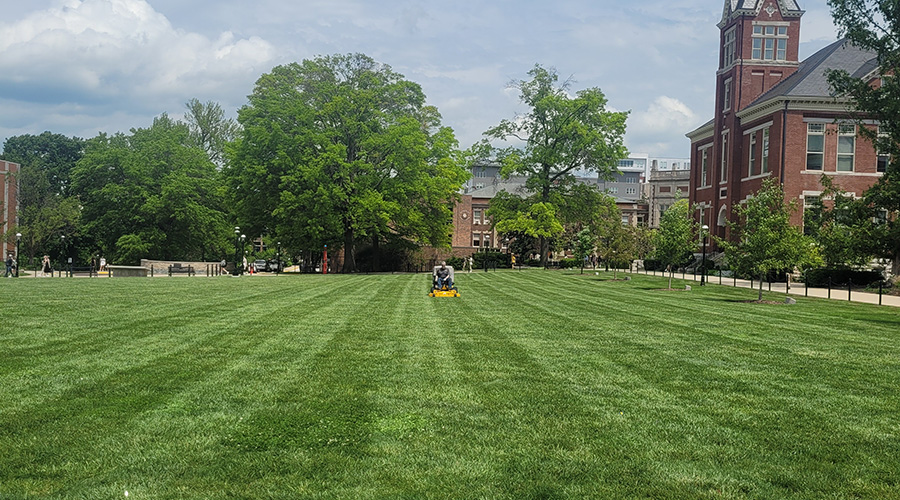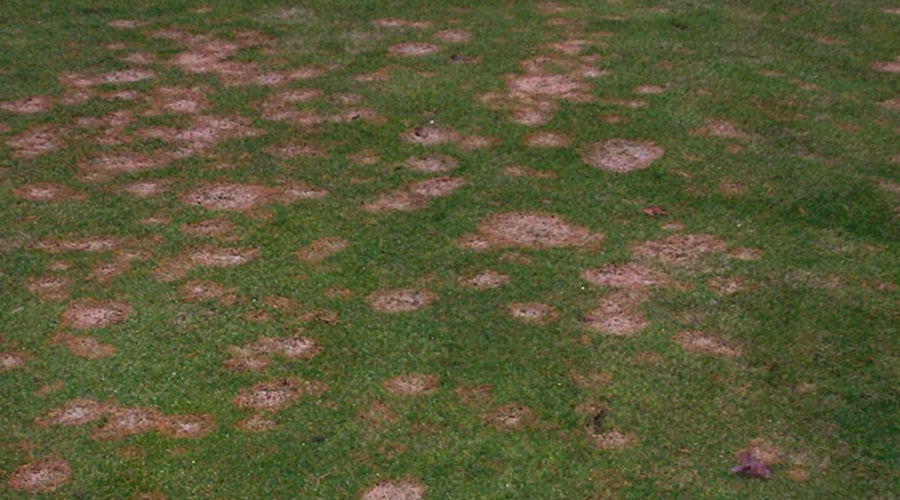Developing a Plan for Snow and Ice Removal
No matter what plan grounds departments have in place to prepare for snow and ice, the winter months pose challenges that force managers to adjust from storm to storm. Departments do their best to ensure paths are clear and occupants are safe, but managers know snow removal inevitably will frustrate building occupants and visitors.
“How to keep occupants happy?” asks Tim Holysz, director of landscape services at Western Michigan University. “Turning off Mother Nature. Mother Nature can play some dirty tricks on you.”
Those dirty tricks force managers to rethink their plans for snow and ice removal each year. Managers can use the non-winter months to evaluate their snow and ice management strategies, as well as address equipment maintenance and specification. As much as managers would like to not think about winter when the grass is green and landscapes are blooming, managers in colder regions of the country always have snow and ice removal on their minds.
“We don’t just close the book, so to speak, when April 1 rolls around,” Holysz says. “We continue on throughout the year. We always have (snow removal) in the back of our mind because it is so important.”
Developing a Plan
Holysz has his hands full managing snow and ice on the Kalamazoo, Mich., campus. It features 700 maintainable acres, including 24 miles of roads, about 125 acres of parking lots, 39 miles of sidewalks, and more than 600 entrances. That large amount of space is the reason Holysz and his department have developed a comprehensive snow-removal plan over the last 21 years.
“First off, you have to know your assets, and your assets are all the hardscape, softscape items,” Holysz says. “That also includes how many miles of sidewalk you have and how many steps and entrances so you can look at the whole general pattern. You have to figure out how much you have and calculate that down to what each person can do and divide that amongst your manpower.”
Western Michigan did not always employ such a comprehensive plan. Before putting together what has become an eight-section, 101-page guide full of maps, resources and policies, the department took more of an informal approach to snow removal, Holysz says. Managers did document some of the tasks that needed to be done before the storms hit, but much of the removal took place on the fly.
That approach changed about 20 years ago when Holysz and his department vowed to compile a more inclusive game plan that viewed grounds as an asset. Customer service became integral to the plan, and the university’s snow manual now provides a detailed framework for the department.
Customer service also is vital to the snow-removal plan at The Cleveland (Ohio) Clinic Foundation, which features a 168-acre campus surrounding the organization’s main hospital. The grounds department focuses on making sure the hospital campus is safe for visitors and patients.
“Basically, our motto is patients first,” says Greg Thurier, director of grounds and facilities operations at The Cleveland Clinic Foundation. “Any patient-care areas are always cleared first.”
As renovation and construction projects continue to multiply in commercial and institutional facilities, grounds departments’ plans have to account for new buildings and components heading into snow-removal season. An organization might have a comprehensive, established plan, but there always has to be room for adjustments.
“The biggest challenges will be when new entrances open up in October that we haven’t plowed before,” Thurier says. “We’ll have to make a plan to see what works and what doesn’t work.”
The grounds department at the University of Michigan in Ann Arbor is responsible for 1,500 acres. The university has a detailed snow-removal plan that lists all buildings and breaks down the campus by its loading docks, sidewalks, entryways, and parking lots. The plan spells out the person responsible for each area when the snow hits, but nothing is set in stone from year to year.
“It’s mostly tweaking, but we do expansion,” says John Lawter, associate director of plant building and grounds services at the University of Michigan. “That’s probably our biggest revamp is expansion of our existing programs. It’s more of an expansion of existing things with a lot of little tweaking on top of that.”
Related Topics:













